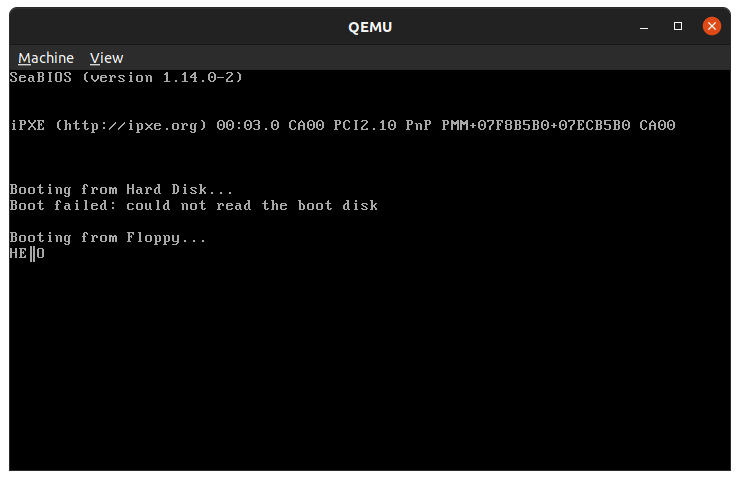 Coffee Space
Coffee Space 

So the Youtube channel Computerphile made a video recently that I found pretty cool. It’s an interesting video in its own right, but one comment stood out at me:
“Of course a 16 byte CPU, probably wouldn’t be much use for anything - you couldn’t even store ‘hello world’ in there and print… Actually, you might be able to store ‘hello world’ in there and print it out… You’d be pushing it to store that, but if someone wants - that’s an exercise to the reader. Erm. Well, that can be the new competition. Can you implement ‘hello world’ in 16 bytes?”
Only a fool would try such a thing…
Okay, I must first do some expectation management. I’ve changed the rules to the follows:
And now onto the code:
0001 [BITS 16] 0002 [ORG 0x7C00] 0003 0004 start : 0005 mov si, hello 0006 mov ah, 0Eh 0007 .loop : 0008 lodsb 0009 int 10h 0010 cmp al, 'O' 0011 jne .loop 0012 ; hlt 0013 0014 hello db "HE", 186, "O"
NOTE: The htl is removed in order to
meet the limit, but may cause undefined behaviour on some systems.
Now to compile it:
0015 nasm hello.asm -o hello.bin
It’s in 16 bytes!
I wrote the following build script that builds the file and runs it in Qemu:
0016 rm hello.bin hello_full.bin 0017 0018 nasm hello.asm -o hello.bin 0019 0020 cat hello.asm >> temp.asm 0021 echo "times 510 - (\$-\$\$) db 0" >> temp.asm 0022 echo "dw 0aa55h" >> temp.asm 0023 nasm temp.asm -o hello_full.bin 0024 rm temp.asm 0025 0026 ls -lah *.bin 0027 0028 qemu-system-i386 -fda hello_full.bin
As you can see, we need to pad the code and add the bootloader signature. These have no part in the execution of the program.
And what does it look like? Take a look:
